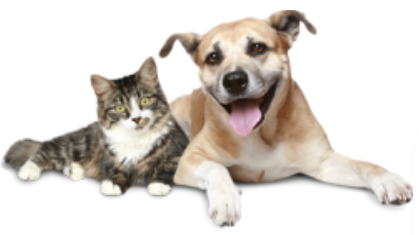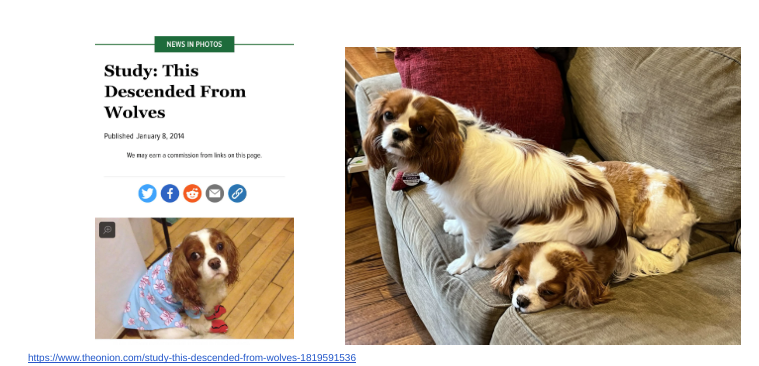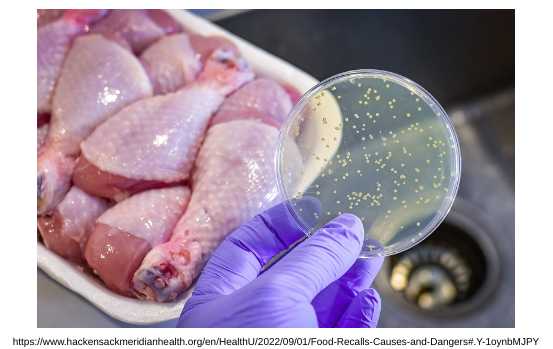Hi everyone, I wanted to address a question that we get a LOT during appointments for dogs and cats of all ages – what should I feed my pet? It seems like such a straightforward question, and it comes from a place of love – everyone wants to give their dog or cat the best, most nutritious food possible so they live long happy lives. And every pet food company – whose mission, of course, is to sell pet food – has really well thought out commercials, with plots that tug at your heartstrings, or majestic wolves running through the wilderness. They all want you to think that their food is the best food and that you are a better person for feeding it. And these days there are so many options in the pet food aisle it can be hard to choose.
First off, please pick a food with grain in it. I know “grain-free” has been the big buzzword over the past few years and a LOT of marketing money has gone into convincing people that their cavi-shih-malti-poos are really wolves and they need this food because of science. Unfortunately, a lot less money has been spent on employing boarded veterinary nutritionists to formulate the food and doing feeding trials to make sure that the food is ACTUALLY safe and nutritious for dogs and cats as opposed to just looking good on paper. And to be clear – there is a difference between employing one (or more) full time boarded veterinary nutritionists and “consulting” with a nutritionist – consulting can be as little as emailing a nutritionist a written out formula and them saying “sure, that looks fine on paper” with absolutely no follow up after that.
I like Purina (particularly the Pro Plan line), Science Diet, and Royal Canin. And no, I have not been paid by any of these companies to recommend them. I like them because I have used them and my dogs have done very well on them – my previous dogs were both on Purina Pro Plan and lived to be 15, and one of my current dogs is on Royal Canin while the other is on a Hill’s Science Diet prescription food. I like them because they have been around for a long time and are tried and true – sure, there is an occasional recall (as there have been with many other dog and human foods) but the fact that they see a problem, own up to it, and fix it is actually a plus in my book. I like that they do feeding trials to make sure their foods can actually support real dogs in real life. And I like them because they employ boarded veterinary nutritionists and meet the WSAVA guidelines, which are the highest standards that a pet food can be held to. I’ve included the link below, but basically they try to make sure foods are not only nutritious on paper, but the nutrients in the food are actually available to your cat or dog for their bodies to absorb after cooking or processing and are well balanced/provide everything they need in real life.
WSAVA Global Nutrition Committee:
Guidelines on Selecting Pet Foods
Pet food labels include a lot of required and useful information for veterinary teams and pet owners. They may also include marketing images and phrases that are designed to promote product sales rather than relay nutritional information. This means that some of the information, including unregulated terms such as ‘holistic’ or ‘premium’, is of little practical value for nutritional assessment. The veterinary team has a vital role in helping pet owners make informed decisions on the optimal diet for their dog or cat.
What to look for in a brand
- Do they employ a Nutritionist?
- Appropriate qualifications are either a PhD in Animal Nutrition or Board Certification by the American College of Veterinary Nutrition (ACVN) or the European College of Veterinary Comparative Nutrition (ECVCN).
- What are the Nutritionist’s name, qualifications and employment status? Consultants may have limited influence compared to a staff Nutritionist.
- Who formulates the diet?
- Is the recipe developed by an experienced pet food formulator (MS or PhD in Animal Nutrition), a veterinarian, or a pet owner/breeder/trainer?
- Recipe development is a complex process requiring knowledge of nutrition, raw materials, and processing not taught in veterinary school programs.
- Trained and experienced formulators may have a degree (MS/PhD) in food science and technology to help guide ingredient selection and nutrient levels for health or disease management.
- An individual with Board Certification by ACVN or ECVCN may also be cross-trained in pet food formulation or work in collaboration with experienced pet food formulators to help guide ingredient selection and nutrient levels.
- What is the quality control process for ingredients and finished products?
- Diets formulated to meet Association of American Feed Control Officials (AAFCO) or European Pet Food Industry Federation (FEDIAF) guidelines should meet their nutrient profiles. Does the diet meet the profile based on analysis using a nutrient database or on chemical analysis of the finished product?
- Manufacturers and pet food providers should have adequate quality control to ensure companion animal and owner safety. This should include ingredient (food and supplement) validation, final diet nutrient analysis, toxicology, bacteriology, and packaging/shelf-life screenings prior to, during, and after manufacturing.
- What kind of product research or nutrition studies have been conducted? Is it published in peer-reviewed journals?
- Pet food companies are not required to conduct or sponsor nutritional research in order to produce and sell a food, but when they do, it indicates a commitment to animal health and wellness.
What to look for on a label
- Nutrition Adequacy Statement?
- Is it a complete diet? Foods should be labeled to indicate if they provide a “complete” diet with all required nutrients. The label might also specify if this was determined via life stage feeding trials vs formulation to meet requirements. Those labeled as intended for “short-term”, “intermittent”, or “complementary” feeding should only be fed as a small portion of the diet (10% or less), or under veterinarian supervision if feeding a therapeutic diet.
- Does the food match the nutritional needs of the individual dog or cat? AAFCO and FEDIAF provide pet food manufacturers with recommended nutrient levels for different life-stages (reproduction, growth, and adult) for healthy dogs or cats. Diets labeled “for all life-stages” are formulated for reproduction and growth.
- How many calories per gram or serving of food? • Obesity prevalence is increasing in pets in many areas of the world. Having access to accurate pet food caloric content can help prevent unintended overfeeding. Calorie information is only required on pet food labels in the US. Where it is not provided on the label it should be available by contacting the manufacturer or calculating from label nutrient analysis.
- Does the company provide immediate contact information such as a phone number or email address? • Company representatives should be easily accessible for additional questions, such as the level of specific nutrients not on the label. Pet food companies should be able to provide an “average” or “typical” analysis for all essential nutrients in their food.
- Who makes the food?
- Companies may make their own food (i.e.,”Made by”) or use a third- party manufacturer (i.e.,”Made for” or “Distributed by”).
If the manufacturer cannot or will not provide any of this information, veterinarians
and owners should be cautious about feeding that brand.
© World Small Animal Veterinary Association (WSAVA) 2021. All rights reservedwsava.org
https://wsava.org/wp-content/uploads/2020/01/WSAVA-Nutrition-Assessment-Guidelines-2011-JSAP.pdf
Second, make sure the food is age appropriate. Puppies and kittens should be on puppy and kitten food until about ~9 months of age for cats and small/medium sized dogs, ~12 months for large dogs, and up to 18 months for giant breed dogs. This is because their skeletal frame is still maturing and their body needs extra nutrients (such as calcium and extra calories) to build bone and muscle. Once they have hit skeletal maturity they should be switched to a diet for adults – the extra nutrients in puppy and kitten food can cause obesity as a dog or cat’s metabolism slows down with age. Every dog and cat’s metabolism is different, just like people – for example, you may have a skinny cat that eats twice as much as your heavy cat. As such, each cat and/or dog in your house may have different caloric needs or even need to be on a different diet than their housemate.
https://www.theonion.com/study-this-descended-from-wolves-1819591536
(This is possibly my favorite Onion photo because I own the derpy beauties on the right)
Third, if you are switching from one food to another, please try to do a gradual change by mixing the new food into the old food and gradually phasing out the old food over the course of 1-2 weeks. This will help prevent GI upset – dogs and cats are pretty used to eating the same thing every day, so changing it up can cause diarrhea +/- vomiting in some cases. Please try to be careful with table scraps – aside from encouraging begging/other bad habits, just remember that a serving for a dog or cat – typically a much smaller being than yourself – is a lot smaller than a serving for you. Cats and dogs can develop pancreatitis from high-fat foods and can develop vomiting and/or diarrhea when things don’t agree with them.
Fourth – very few veterinarians support feeding raw food. Even if you are super careful about the source of the meat and handling the meat in your kitchen, your cat or dog is eating it and getting the germs all over their face, then rubbing that face all over your furniture and your bed and your face and giving you kisses with it’s raw food germ mouth and in a world when we have antibiotic resistance developing like crazy it just doesn’t seem like a great idea. Here’s a few blogs on that too:
https://vetnutrition.tufts.edu/2022/01/raw-diets-perception-of-human-health-risks/
https://vetnutrition.tufts.edu/2016/01/raw-diets-a-healthy-choice-or-a-raw-deal/
https://vetnutrition.tufts.edu/2019/07/raw-cat-food-tuberculosis/
And here is a very recent article (March 20, 2023) about a warning letter from the FDA to a raw pet food company in California called Primal Pet Foods regarding their inspection of the facility following a recall for salmonella and listeria contamination of their Raw Frozen Primal Patties for Dogs Beef Formula. There were multiple violations. It’s…not great.
Here is the full warning letter itself:
https://www.hackensackmeridianhealth.org/en/HealthU/2022/09/01/Food-Recalls-Causes-and-Dangers#.Y-1oynbMJPY
If you are really set on a home cooked diet, I recommend the BalanceIt.com website. This site is run by nutritionists and they have thousands of balanced recipes for either a basic diet or a diet specifically for a health issue with the proper vitamins and minerals. If you want a personal consultation with a boarded veterinary nutritionist they have resources for that too:
https://secure.balanceit.com/info/acvnecvcn.php
Finally, what things should I 100% avoid feeding my dog or cat? Excellent question, and the ASPCA’s Animal Poison Control is here to help you out with that:
https://www.aspca.org/pet-care/animal-poison-control/people-foods-avoid-feeding-your-pets
https://virily.com/virily_poll/plain-or-peanut-or-none-you-ask/
If you ever worry that something your pet ate may be toxic – whether it is food or a human medication, a plant, or another household product – calling poison control is the first thing you should do. We often rely on their knowledge to figure out if your pet needs treatment or not, and if so how aggressive we need to be.
So, before you buy that food that your friend recommended, or one that the pet store employee thinks is “definitely the best”, or the one that a “nutrition consultant” (who is not a DVM but has completed some nebulous training or certification program and also happens to work at a pet store) thinks will fix all your dog’s problems, or the one that you saw on TV that had a majestic wolf in the commercial – maybe take a minute, look up the company and if it’s not immediately clear, email the management and ask them “how many board certified veterinary nutritionists do you currently employ? Does your food meet WSAVA guidelines? Do you do feeding trials?” Or just call us and ask to talk to your vet about what food they would recommend for your dog or cat. We’d be happy to talk to you about which one, why we recommend it, and address any concerns – like sensitive stomach, food allergies, your pet’s weight – that you have.
Our next blog will contain more in-depth information about the grain free diet issue and how our understanding of the link between grain free diets and heart disease has progressed over the past 5 years, so stay tuned!
–Dr. Muir





